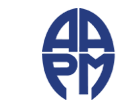| Question 1: Who does the COE apply to? |
| Reference: | Code of Ethics for the American Association of Physicists in Medicine: Report of Task Group 109. |
| Choice A: | All qualified medical physicists. |
| Choice B: | All professionals. |
| Choice C: | All scientists practicing in a clinical environment. |
| Choice D: | All AAPM members and affiliates. |
| Choice E: | AAPM volunteers only . |
| Question 2: In the case of a conflict of interest: |
| Reference: | Code of Ethics for the American Association of Physicists in Medicine: Report of Task Group 109. |
| Choice A: | Excuse your self from AAPM membership. |
| Choice B: | All you have to do is disclose. |
| Choice C: | It is your responsibility to disclose and manage the conflict. |
| Choice D: | As long as no one knows, it is not a conflict. |
| Question 3: Each AAPM member: |
| Reference: | Code of Ethics for the American Association of Physicists in Medicine: Report of Task Group 109. |
| Choice A: | Has the responsibility to act as a steward of the healthcare resources entrusted in them. |
| Choice B: | Must assist and cooperate with regulators. |
| Choice C: | Has the responsibility to name and shame an incompetent colleague. |
| Choice D: | Must have a graduate degree in Physics. |
| Choice E: | A and B only. |
| Question 4: All of the statements below are true of complaints filed with the AAPM Ethics Committee except: |
| Reference: | Code of Ethics for the American Association of Physicists in Medicine: Report of Task Group 109. |
| Choice A: | Complaints alleging ethical misconduct can only be filed against members of the AAPM. |
| Choice B: | All complaints are kept confidential. |
| Choice C: | Anonymous complaints cannot be filed. |
| Choice D: | Filing a complaint against a member automatically gets the accused member expelled from the AAPM. |
| Choice E: | The decision of the Ethics Committee can be appealed. |
| Question 5: Practicing inclusivity: |
| Reference: | The Fifth Discipline Fieldbook. Copyright 1994 by Peter M. Senge, Art Kleiner, Charlotte Roberts, Richard B. Ross, and Bryan J. Smith. |
| Choice A: | Means treating colleagues the way they want to be treated, not the way you want to be treated. |
| Choice B: | Means identifying a bias and acting consciously to eliminate it. |
| Choice C: | Can be aided by using the Ladder of Inference. |
| Choice D: | Improves productivity, work satisfaction, efficiency and effectiveness. |
| Choice E: | All of the above. |
| Question 6: The ladder of inference is a tool for: |
| Reference: | The Fifth Discipline Fieldbook. Copyright 1994 by Peter M. Senge, Art Kleiner, Charlotte Roberts, Richard B. Ross, and Bryan J. Smith. |
| Choice A: | Becoming more aware of your own thinking and reasoning (reflection). |
| Choice B: | Living your life without adding meaning or drawing conclusions. |
| Choice C: | Making your thinking and reasoning more visible to others (advocacy). |
| Choice D: | Inquiring into others' thinking and reasoning (inquiry). |
| Choice E: | A, C, and D. |
